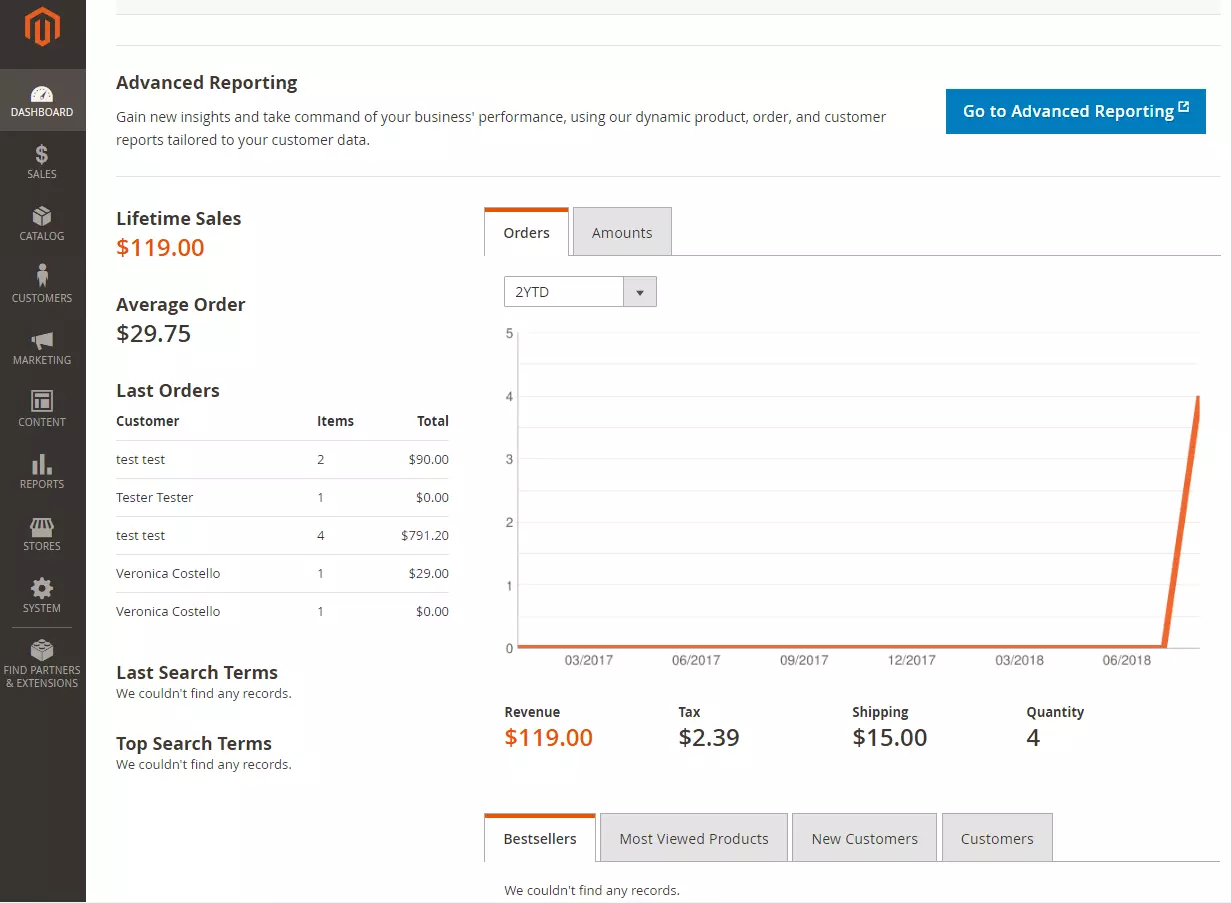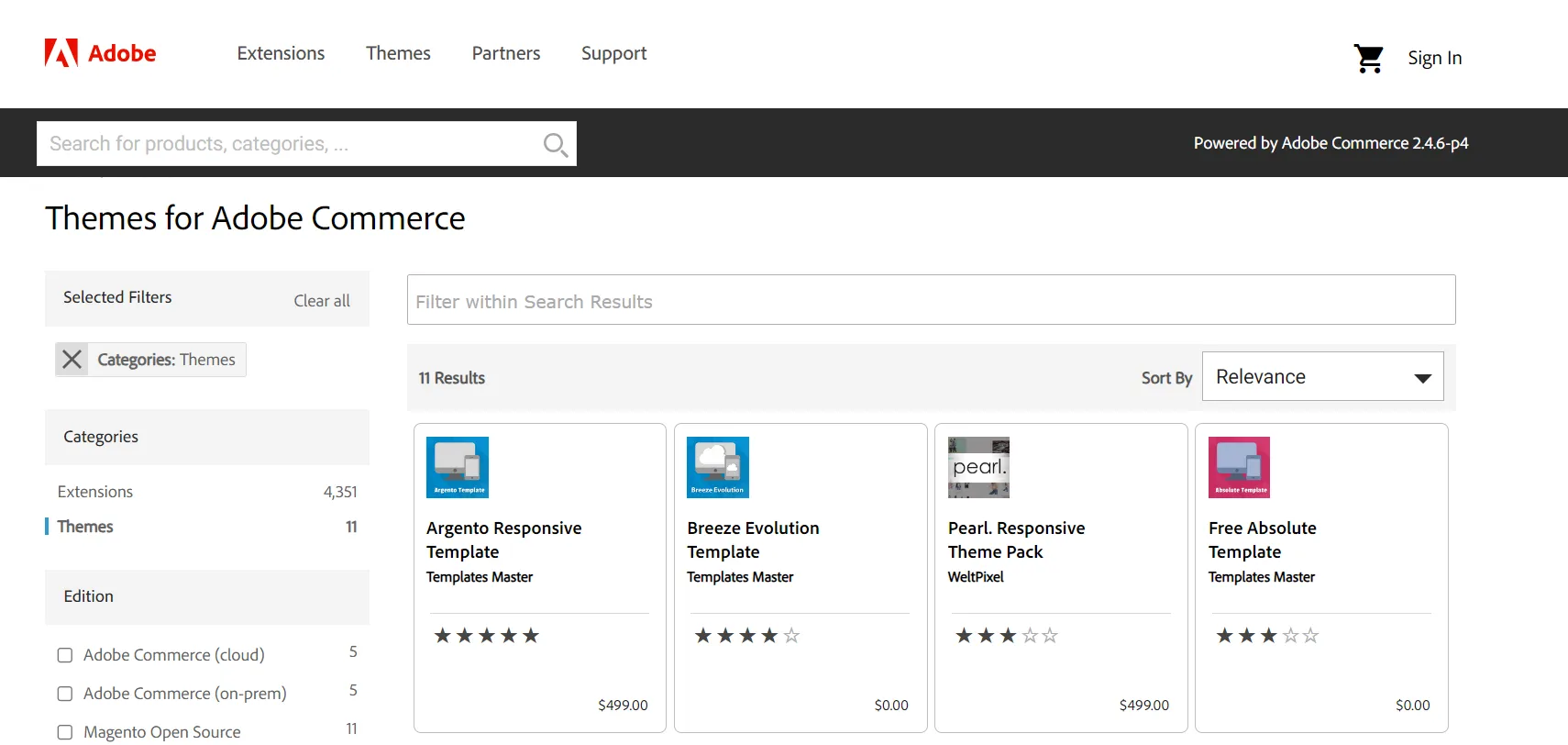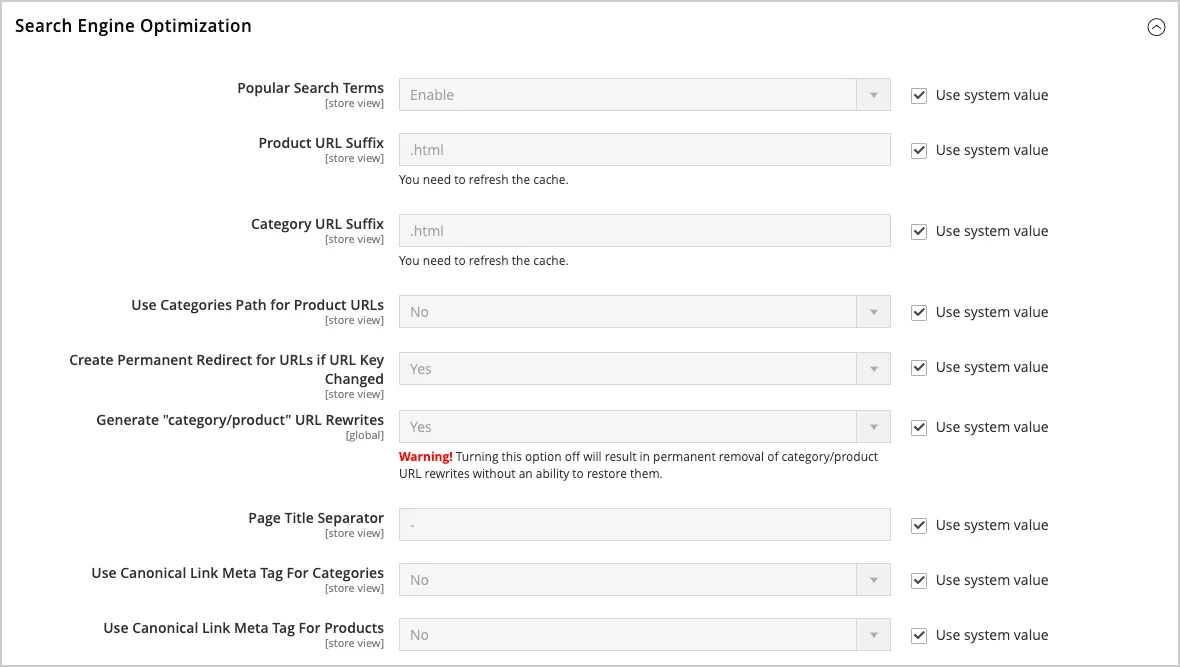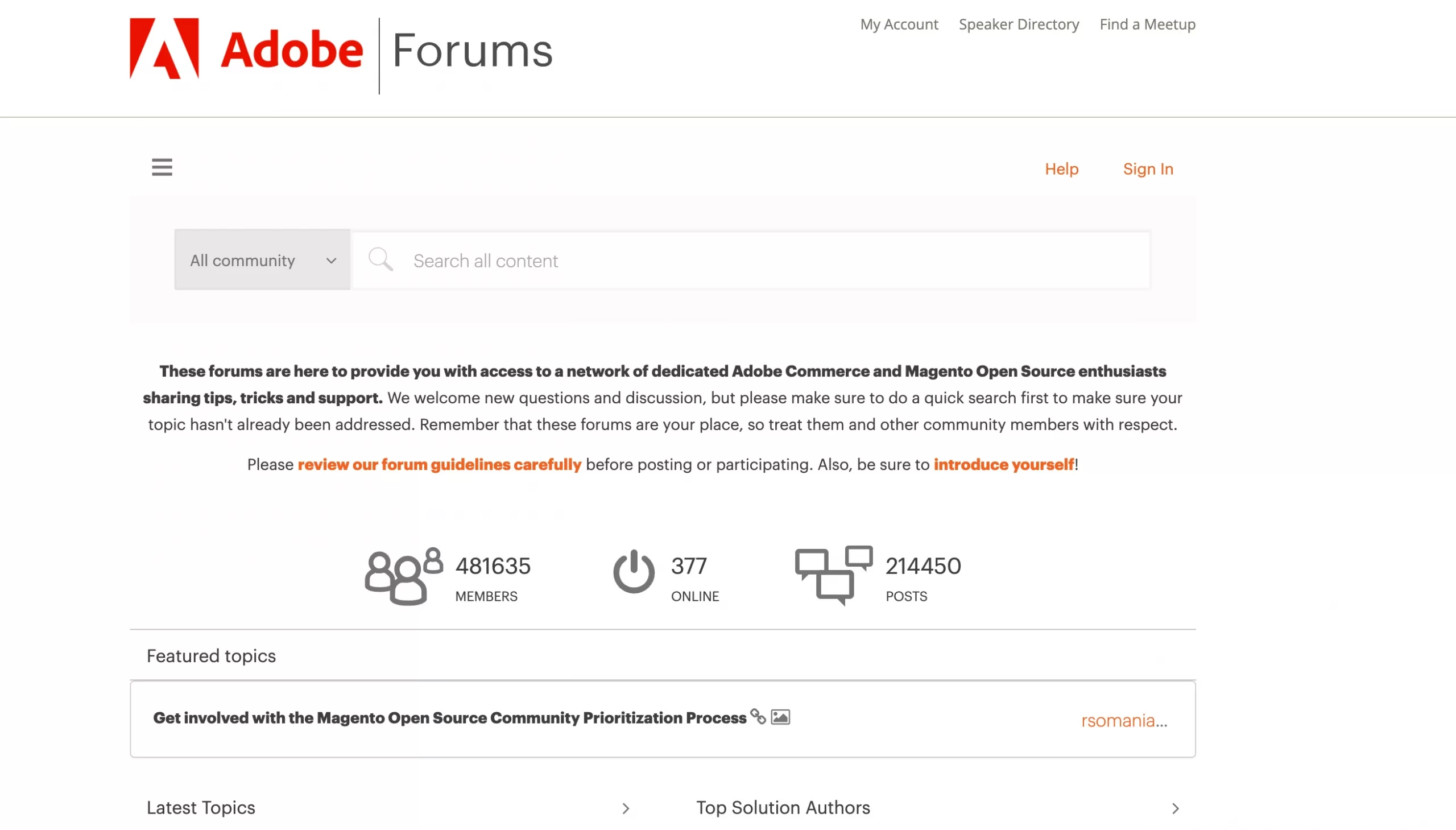Magento is an option for large businesses with complex eCommerce needs that require more technical expertise and a larger budget. PrestaShop is a user-friendly and affordable choice for SMEs with a good balance of features, customization options, and ease of use. So, between Magento vs PrestaShop, which is better for 2025?
In this article, LitExtension is here to provide all the details to Magento and PrestaShop through the following key points:
- An overview of PrestaShop and Magento
- Detailed comparison of all aspects of Magento vs PrestaShop
- Deciding which platform is the best for your store
Keep scrolling for more!
Magento vs PrestaShop Detailed Comparison
Before digging deeper, please take a look at our quick comparison table below.
Features | Magento | PrestaShop |
Pricing (starting) | Free (open source), higher hosting cost | Free (open source), higher hosting cost |
Ease of Use | More complex, requires technical skills | Easier, beginner-friendly |
Number of Themes | 300+ (paid & free) | 1000+ (paid & free) |
Built-in Features | Advanced features, multi-store capabilities | Basic eCommerce features |
Extensions/Modules | 5,000+ | 3,000+ |
SEO Features | Advanced SEO features & customization | Basic SEO features |
Security | Excellent, robust security features | Good, regular updates |
Payment Gateways | Extensive integrations & customization options | Wide range of integrations |
Scalability | Highly scalable for large enterprises | Suitable for small to medium businesses |
Support | Community, paid support & extensive documentation | Community & paid support |
1. Pricing: PrestaShop Wins
Both Magento vs PrestaShop are open-source platforms, meaning they are free to download and install. However, the overall cost of ownership varies significantly depending on your specific needs and chosen approach.
Magento
- Hosting: VPS or dedicated servers can range from $50 to $1,000+ per month, while cloud hosting solutions can cost even more.
- Themes: between $100 and $500 for premium themes.
- Extensions: varying from $0 to thousands of dollars.
- Development costs: ranging from a few thousand dollars to tens of thousands for custom development and integrations.
Total cost of operation for Magento (estimated)
- Basic setup (open-source): $500 – $2,000 (including hosting, theme, and essential modules)
- Advanced setup with customization (Adobe Commerce Edition): $5,000 – $20,000+
PrestaShop
- Hosting: Shared hosting plans can start as low as $5-10 per month, while dedicated servers or cloud hosting for larger stores can range from $50 to $500+ per month.
- Themes: costing between $50 and $200 for premium themes.
- Modules: ranging from $0 free to hundreds of dollars.
- Development costs: varying from a few hundred dollars to thousands, depending on the scope of the project.
Total cost of operation for PrestaShop (estimated)
- Basic setup: $100 – $500 (including hosting, theme, and essential modules)
- Advanced setup with customization: $1,000 – $5,000+
While both PrestaShop and Magento offer open-source versions, their overall cost of operation varies significantly. But let's be aware that there are still more potential hidden costs I didn't list like development, customization, and ongoing maintenance.
The Verdict
PrestaShop is generally more affordable and suitable for smaller businesses, while Magento's advanced features and scalability come with a higher price tag.
2. Ease of Use: PrestaShop Wins
Both PrestaShop and Magento involve similar setup stages. To begin setting up a store, here are some basic things:
- Download the latest version of PrestaShop/Magento from the official website.
- Upload the files to your web hosting server using FTP or a file manager.
- Access the installation script through your web browser and follow the on-screen instructions.
- Configure your database connection details and create an administrator account.
Generally, PrestaShop offers a more streamlined and user-friendly experience, making it suitable for beginners. Magento's setup requires more technical knowledge and a greater time investment, but it provides more flexibility and customization options for advanced users.
Let's come to the user interface and customization of Magento vs PrestaShop.
Magento's interface is a bit complex and less intuitive. It takes some time to get used to the layout and navigation, especially for users without prior experience with similar platforms.

PrestaShop boasts a clean, intuitive interface that is generally considered more user-friendly than Magento. The backend dashboard is well-organized and easy to navigate, making it simple to manage products, orders, and customers.

Moreover, the PrestaShop admin panel can also be accessed via mobile devices like smartphones or tablets.
The Verdict
PrestaShop is the clear winner in terms of ease of use. It is a more beginner-friendly platform that requires minimal technical expertise to set up and manage.
3. Performance & Scalability: Magento Wins
To be able to scale up, your eCommerce platform needs the capability of smoothly coping with this sudden rise in the number of visitors. In comparison between Magento vs Prestashop, performance and scalability are also key elements.
Magento has been one of the best eCommerce platforms for large and growing merchants and enterprises. As discussed above, Adobe Magento is a powerful platform capable of comfortably coping with up to 50,000 visits per hour.
Indeed, Magento has made improvements to client-side, server-side, and database systems to meet the stability and scalability needs of large enterprises. For example, Magento provides several optimizations that reduce the amount of data that must be passed to the browser to render the webpage, which reduces page weight and improves response time.
On the other hand, PrestaShop's ability to handle large websites is also exceptional, but it still cannot surpass Magento. One of the largest websites on PrestaShop is botland.com.pl, the biggest Polish online store for robotics and electronics specialists.
Seamlessly migrate to Magento!
LitExtension can safely transfer your products, customers, and orders to unlock more growth on Magento.

In 2024, PrestaShop launched a new API system using the API Platform framework, allowing faster third-party integrations and better data handling. Magento's version 2.4.7 upgraded its GraphQL API, expanding support for custom attributes and improving real-time catalog update performance. The new API system of PrestaShop makes custom app development and third-party integrations easier, enhancing flexibility. Magento GraphQL API improvements boost performance and integration, especially for real-time data and headless commerce.
As you can see, PrestaShop simplifies developer interactions with its modernized API, while Magento focuses on enhancing its existing API for more complex integrations and better performance.
The Verdict
Magento is doing better in terms of scalability when it comes to huge sites like international brands' websites, but SMEs would not face any problems regarding performance and scalability on both platforms because PrestaShop would also work excellently for their websites.
4. Themes & Flexibility: PrestaShop Wins
For both Magento and PrestaShop, I can select many ready-made themes on the marketplace.
For Magento, there are 9 themes available on its marketplace and 300+ other options on Themeforest. Here are my top picks for your Magento 2 store in the collection of the best Magento themes.

At the same time, PrestaShop provides over 2000 ready-made templates for its users. You can also sort them according to your store's current version. PrestaShop clearly leaves no one left behind.

Besides the themes provided on the platforms' marketplaces, you can also purchase themes from third-party providers such as themeforest.net. Remember to refer to the best PrestaShop themes you shouldn't miss.
Let's talk a bit about the flexibility…
If you have limited technical skills, PrestaShop's easier customization options might be more suitable. However, consider your budget for themes and development costs. PrestaShop offers more affordable options, while Magento's premium themes and development can be more expensive.
If you require extensive customization and complex functionalities, Magento's flexibility might be worth the extra effort and cost.
The Verdict
PrestaShop significantly outweighs Magento in terms of the number of themes. Yet, since both platforms are open-source, merchants can flexibly modify the pre-made themes according to their brand identity or build a fully customized website design from scratch.
5. Built-in Features: Magento Wins
Magento is a comprehensive eCommerce solution with many features. Yet, the open-source edition has limitations compared to the paid version, requiring users to install extensions for certain features like multiple languages and currencies.
In addition to the basic features, Magento also provides highlighted features like customer segmentation and presentation, dynamic rule-based product relations, and elastic search. While Magento offers a comprehensive suite of features, every business's specific needs vary.
It's more accurate to say Magento offers a vast majority of features needed for robust eCommerce operations, but specific niche requirements might still necessitate extensions or custom development.
PrestaShop does offer the core functionalities needed to run an eCommerce store, including product management, promotions, multi-currency support, multi-language support, and features to address abandoned carts.

While PrestaShop might lack the depth of Magento's features, its simplicity and ease of use are significant advantages. Magento's advanced features are better suited for larger businesses with complex needs, while PrestaShop's simplicity aligns with the requirements of smaller businesses.
The Verdict
Magento Commerce edition would offer more diverse and advanced features than PrestaShop.
6. Extensions & Modules: It's a Tie!
Over 4,000 extensions are available on the Magento marketplace. Over a third of them fall into the Content & Customizations category, and the rest serve other purposes, such as Sales, Payment and security, Shipment and fulfillment, Site Optimization, etc.

The sheer breadth and depth of Magento's extension marketplace are impressive. It's a testament to the platform's flexibility and ability to cater to highly specific requirements. However, navigating this vast marketplace can be overwhelming, especially for non-technical users. The cost of premium extensions can also be a significant factor to consider.
PrestaShop also provides access to an extensive collection of approximately 4000 modules, which can be effortlessly incorporated with just a few clicks. These feature-rich modules enhance store performance and are particularly advantageous for beginners.

PrestaShop's marketplace strikes a good balance between functionality and ease of use. While it might not offer the same depth of specialization as Magento, its modules are generally more accessible and affordable, making it a valuable resource for enhancing your PrestaShop store without requiring extensive technical expertise.
The Verdict
It's a tie for the competition between Magento vs PrestaShop extensions in both terms of quantity and quality. These add-ons are sorted not only by categories but also by purposes such as traffic, conversion rate, or customer relations.
7. Marketing & SEO: It's a Tie!
For some basic capabilities like URL adjustments, canonical tags, and implementation of 301 redirects, both Magento vs PrestaShop are fully supported.
But is there anything else on marketing and SEO? Let's talk about Magento first.
Magento comes with built-in SEO capabilities. This platform offers a strong foundation for SEO with features like customizable URLs, meta tags, XML sitemaps, and schema.org integration.

Meanwhile, the Magento Commerce edition provides advanced marketing features like customer segmentation, targeting, and analytics, surpassing the capabilities of the Open Source edition.
To me, Magento's built-in SEO features are undeniably robust and provide a solid foundation for organic optimization. However, leveraging these features effectively often requires technical expertise and a deeper understanding of SEO principles. While the Commerce edition offers more advanced marketing tools, the Open Source edition still provides a good starting point for SEO.
While PrestaShop offers basic SEO features, achieving advanced optimization often requires installing additional modules. For promotion, PrestaShop provides a solid foundation for marketing and promotions, further enhanced by integrations with major platforms like Google, Facebook, and Klaviyo.

To me, PrestaShop's approach to SEO and marketing relies more on its module ecosystem. While this might require additional investment, it allows users to tailor their marketing strategies to their specific needs. PrestaShop's focus on ease of use and integrations with popular marketing platforms makes it particularly accessible to smaller businesses and beginners.
The Verdict
Both of these eCommerce platforms offer an extensive array of features aimed at optimizing SEO.
8. Security: It's a Tie!
Magento releases security patches every 10 to 15 days to fix vulnerabilities, and the open-source edition includes a Content Security Policy to restrict browser content to whitelisted services.

The Magento Commerce edition simplifies PCI compliance with integrated payment gateways for secure credit card data transmission. I also recommend some security extensions, such as Amasty's Security Suite, that:
- Protect your store from spam and bots;
- Get the full picture of all admin actions;
- Receive notifications about all suspicious login activities;
- Double your store security with two-step authentication;
- Effectively manage user permissions.
For PrestaShop, its downloadable set-up file is PCI compliant. Payment Card Industry Data Security Standard (CPI DSS) is a data security standard with which every company that accepts card payments needs to comply.
Furthermore, store owners can install numerous PrestaShop security modules. For example, the Official GDPR Compliance ensures your store's compliance with the General Data Protection Regulation, an EU regulation on data protection and privacy.
Another example is the Security Lite module which reduces the risk of unauthorized access by adding another layer of security to your PrestaShop website. The features of this module include:
- Brute force protection;
- Analyze HTTP headers;
- Block custom list of IP addresses;
- Block custom list of user agents;
- Ban IP’s;
- Automatic backup database;
- Generate strong passwords;
- Fix insecure permissions;
- Remove malicious files;
- Disable right-click;
- Disable right-click for images only;
- Check your shop for all known vulnerabilities.
The Verdict
All in all, Magento vs PrestaShop are absolutely secure platforms to work with. But it also depends on you installing security extensions to protect your website.
9. Payment Methods: PrestaShop Wins
In terms of third-party service providers, Magento is currently supporting PayPal, Klarna, and Amazon Pay. While Magento supports PayPal, Klarna, and Amazon Pay, it's important to note that these integrations might require specific extensions or configurations, especially for the Open Source edition.
Magento does offer default payment methods like check/money orders, bank transfers, cash on delivery, purchase orders, and zero subtotal checkout. However, these methods might not be suitable for all businesses and regions.
Also, Magento default payment methods include:
- Check/money order;
- Bank Transfer;
- Cash on delivery;
- Purchase Order;
- Zero Subtotal Checkout.
While Magento offers a decent selection of default payment methods and a vast marketplace for extensions, I think the integration process for some popular gateways might not be as straightforward as with other platforms.
Meanwhile, by default, PrestaShop offers several default payment methods, including checks, cash on delivery, bank wire, and PayPal. These options provide a good starting point for many businesses. Also, PrestaShop Checkout is a comprehensive solution that simplifies payment gateway integration and management, offering access to a wide range of providers.
So in my personal analysis, PrestaShop's approach to payment gateway integration is generally more user-friendly, especially with the PrestaShop Checkout solution.
The Verdict
Accordingly, between Magento vs PrestaShop, PrestaShop provides a more user-friendly experience for payment gateway integration, especially with the PrestaShop Checkout solution.
10. Support: It's a Tie!
Since both Magento vs PrestaShop are open-source platforms, users must seek the answers to their queries on the help center, knowledge base, shared documentation, and resources of the platforms.
Currently, there are over 480,000 members on the Magento forum. Apart from the forum, we can submit queries via ticket to the platforms for more advanced questions.

Especially, Magento Commerce users receive much more active customer support than the Open-source plan. To be more specific, while Open-source plan users have to look for solutions themselves, customers of the Commerce edition can reach Magento Enterprise Edition Customer Support via online portals and telephone.
On the other hand, the PrestaShop forum has over 1.3 million members, nearly three times the number of its competitors.
It also provides customer support services that require payment. One example is the “Technical Support Plan,” which includes speedy customer support and expert consultancy. Depending on the support level, this service would cost from 90€ to 900€+.
However, the PrestaShop ticket function is only available in paid add-ons, while Magento offers free support via ticket.
The verdict
According to customer opinion, both PrestaShop and Magento are doing excellently in terms of customer support, as they both score 4/5 on Capterra.
Pros & Cons Summary of Magento vs PrestaShop
Platform | Magento | PrestaShop |
Pros |
|
|
Cons |
|
|
PrestaShop vs Magento: Which One Is Ideal for Your Business?
This article has discussed and compared eleven aspects of Magento vs PrestaShop, including pricing, ease of use, eCommerce features, and so on.
Overall comparison:
- Magento: Best suited for large enterprises with complex requirements, high traffic volumes, and the budget to invest in a robust and scalable platform.
- PrestaShop: Ideal for startups, small to medium-sized businesses, and those prioritizing ease of use and cost-effectiveness.
For PrestaShop, despite being an open-source cart, this platform is easy to install and manage. It provides all of the important features that an online store would require, plus thousands of add-on modules. Moreover, this platform is outstanding in terms of the number of ready-made themes.
My personal analysis on PrestaShop: PrestaShop's strengths lie in its ease of use, affordability, and extensive theme selection, making it an excellent choice for startups, small businesses, and those with limited technical expertise.
In contrast, you might not equally favor Magento (Adobe Commerce) in terms of ease of use and pricing. However, Magento is very eCommerce-focused and performs marvelously when it comes to large-scale units. In fact, many globally popular brands are putting their trust in the Magento platform to cope with their web stores.
My personal analysis on Magento: Magento's power and flexibility come with a higher price tag and a steeper learning curve. It's a robust solution for large businesses that require extensive customization and scalability but might be overkill for smaller businesses with simpler needs.
Still weighing Magento vs PrestaShop in 2025? Check out our latest video breaking down Magento Open Source based on thousands of real migration cases, including what it gets right and where it’s tricky.
Magento vs PrestaShop: FAQs
Is PrestaShop better than Magento?
PrestaShop is ideal for small to medium-sized businesses because of its user-friendly interface and lower costs. In contrast, Magento is better for larger enterprises that require advanced features and scalability.
Is PrestaShop still used?
PrestaShop is still popular, used by over 200,000 online stores worldwide, especially in Europe and Latin America.
What is Magento best for?
Magento is ideal for businesses of all sizes that need a customizable platform for managing large inventories and high traffic, making it perfect for eCommerce.
What is the disadvantage of Magento?
Magento has several main drawbacks. First, it is complex and has a steep learning curve. Second, it can be expensive to develop and maintain. Third, it uses a lot of resources, which often means you need strong hosting solutions.
What is the difference between Magento 2 and PrestaShop 8?
Magento 2 offers advanced features and greater customization but is more complex. PrestaShop 8 is user-friendly and affordable, prioritizing essential features.
Bottom Line
Hopefully, this article has the information that you are seeking and has somehow contributed to your decision when choosing between PrestaShop and Magento.
If you are planning on migrating from a platform to PrestaShop or Magento, between these two platforms, or any other platforms, LitExtension is willing to help. For any further information about LitExtension, please feel free to contact us!
Last but not least, you can check out our LitExtension eCommerce platform section or join our Facebook Community to get more eCommerce tips and news.

